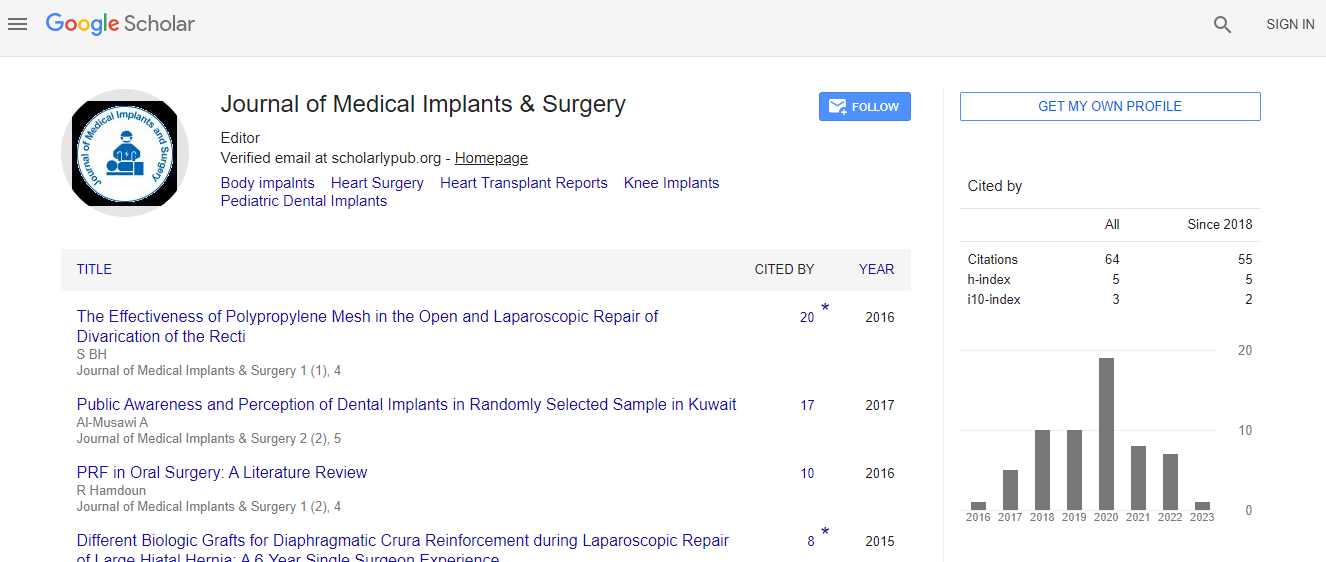Different Biologic Grafts for Diaphragmatic Crura Reinforcement during Laparoscopic Repair of Large Hiatal Hernia: A 6-Year Single Surgeon Experience
*Corresponding Author:
Copyright: © 2021 . This is an open-access article distributed under the terms of the Creative Commons Attribution License, which permits unrestricted use, distribution, and reproduction in any medium, provided the original author and source are credited.
Abstract
Minimally invasive approach in the repair of hiatal hernias became
a standard of care during the last two decades. Laparoscopy offers
faster recovery, shorter hospital stay and less morbidity than traditional
laparotomy [1,2]. Several studies have shown higher recurrence rates
after a suture-based repair of hiatal hernias [3-5]. A “tension-free”
repair with prosthetic mesh allowed to decreased recurrence [6], but the
use of synthetic materials produced potentially serious problems, such
as erosion and dysphagia [7-10]. Multiple reports showed reduction
in short-term recurrence rate after hiatal hernia repair with biologic
grafts [11-15]. However, the improvement in hiatal hernia recurrence
decreased at long-term follow-up.

